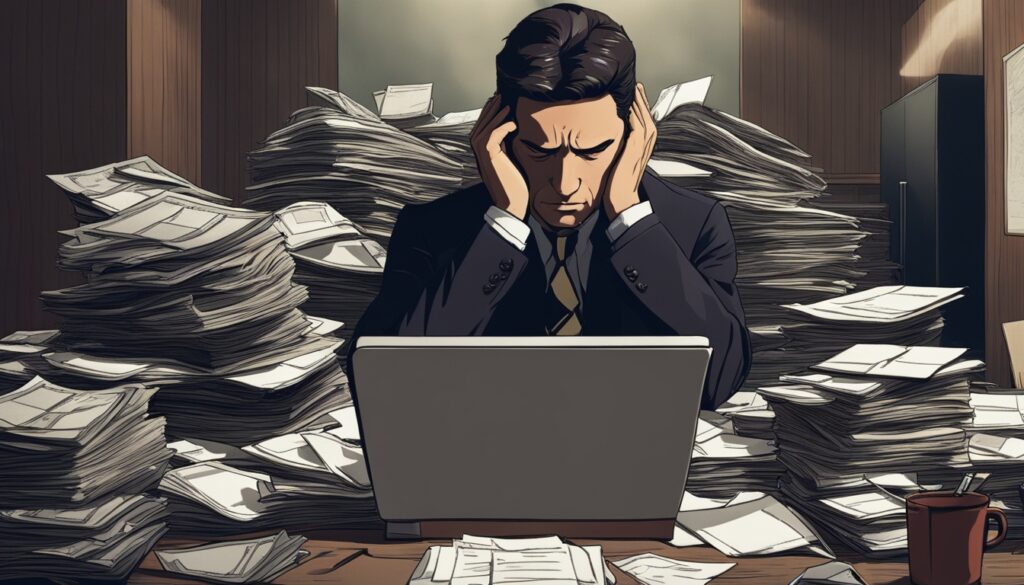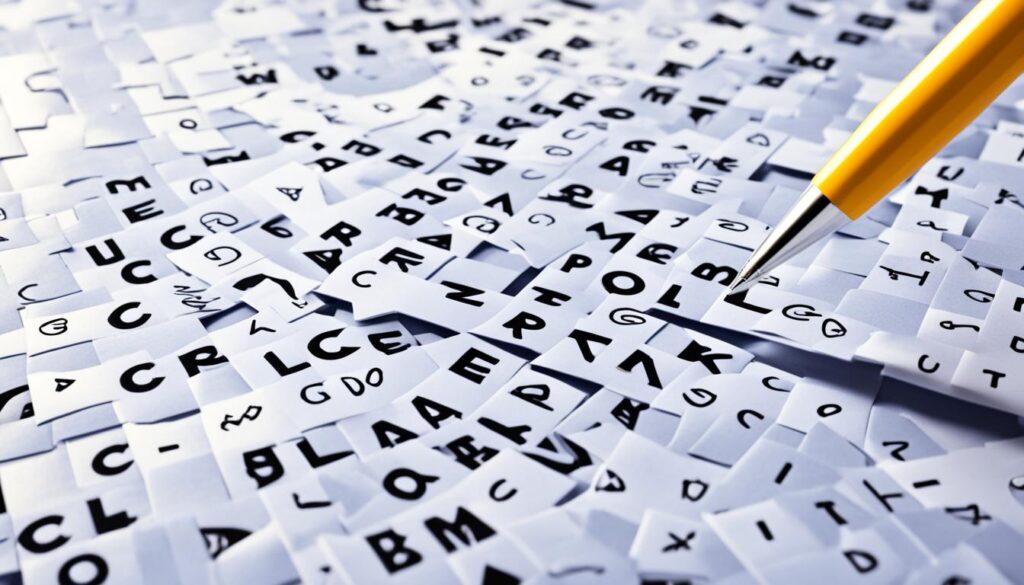Navigating the complex world of credit reporting can be a daunting task, but when errors or inaccuracies arise, a well-crafted credit dispute letter can be your most powerful tool. Whether you’re dealing with identity theft, reporting errors, or miscommunications between creditors and credit bureaus, these discrepancies can significantly impact your credit score, hindering your ability to secure loans, obtain favorable interest rates, and even affecting potential employment opportunities.
In this comprehensive guide, we’ll delve into the art of crafting effective credit dispute letters, equipping you with the expert knowledge and strategies to assert your consumer rights and safeguard your financial future. By understanding the importance of accurate credit reporting and mastering the steps to write a persuasive dispute letter, you’ll be empowered to take control of your credit health and achieve the financial success you deserve.
Key Takeaways
- Understand the crucial role of credit dispute letters in protecting your financial reputation
- Learn how to effectively gather supporting documentation and structure your dispute letter
- Discover various types of credit dispute letters, including the powerful 609 credit dispute letter
- Explore tips for writing compelling credit repair letters that get results
- Recognize the benefits of seeking professional assistance for credit repair, if needed
- Maintain accurate credit reports for long-term financial success
- Stay vigilant and proactive in monitoring your credit report for any discrepancies
Understanding the Importance of Credit Dispute Letters
Maintaining an accurate credit report is crucial for your financial well-being. Credit reporting errors, which are more common than you might think, can significantly impact your credit score and make it challenging to qualify for loans, credit cards, or even secure a job. That’s where credit dispute letters come into play.
Protecting Your Financial Reputation
Inaccuracies in your credit report can tarnish your financial reputation, making it harder for you to access credit, secure a mortgage, or even rent an apartment. By proactively disputing any errors through credit dispute letters, you can safeguard your credit score and maintain a strong financial standing.
Ensuring Accuracy in Credit Reporting
The three major credit bureaus – TransUnion, Experian, and Equifax – are responsible for compiling and maintaining your credit report. However, mistakes can occur, and it’s your responsibility to ensure the information in your report is accurate. Credit dispute letters allow you to address these errors and ensure your credit report reflects your true financial history.
| Type of Credit Reporting Error | Potential Impact |
|---|---|
| Incorrect account information | Lower credit score, difficulty obtaining credit |
| Fraudulent accounts or identity theft | Damaged financial reputation, risk of further identity theft |
| Outdated or unverified information | Inaccurate credit history, impaired credit-building efforts |
By addressing credit reporting errors through well-crafted credit dispute letters, you can protect your financial reputation and ensure the accuracy of your credit report, ultimately paving the way for your financial success.
Steps to Writing an Effective Credit Dispute Letter
Crafting an effective credit dispute letter is a crucial step in rectifying inaccuracies on your credit report. This letter not only serves as the foundation for addressing credit reporting errors but also establishes a documented record of your efforts to resolve these discrepancies. By engaging in proactive credit management, you can ensure the accuracy and integrity of your credit history, paving the way for more secure financial endeavors.
Obtaining Your Credit Report
The first step in writing a credit dispute letter is to obtain a copy of your credit report. This document serves as the starting point for identifying any errors or inaccuracies that need to be addressed. You can request a free credit report from the three major credit bureaus – Experian, Equifax, and TransUnion – and review it carefully for any anomalies.
Gathering Supporting Documentation
Once you have identified the specific credit report inaccuracies, it’s time to gather supporting documentation. This may include payment receipts, account statements, or any other evidence that contradicts the information on your credit report. Having this documentation on hand will strengthen your credit dispute letter and provide a solid foundation for your case.
Structuring Your Letter
When drafting your credit dispute letter, it’s important to follow a clear and organized format. Begin by clearly stating the purpose of your letter and the specific errors or inaccuracies you have identified. Provide a detailed explanation of the issue, along with the supporting documentation you have gathered. Be concise and focused in your writing, ensuring that your letter is easy to understand and navigate.
| Credit Dispute Letter Format | Key Elements |
|---|---|
| Introduction | State the purpose of the letter and identify the specific errors or inaccuracies on your credit report. |
| Explanation of the Issue | Provide a detailed explanation of the problem, including any supporting documentation. |
| Requested Action | Clearly state the action you are requesting the credit bureau to take, such as correcting the error or removing the inaccurate information. |
| Conclusion | Thank the credit bureau for their attention to the matter and reiterate your request for a timely resolution. |
By following these steps and structuring your credit dispute letter effectively, you can increase the likelihood of a successful outcome and ensure that your credit report accurately reflects your financial history.

Crafting Effective Credit Dispute Letters
When it comes to credit repair, credit dispute letter writing is a crucial step in ensuring the accuracy of your credit reports. Whether you’re disputing a late payment, charge-off, or collection, having a well-crafted dispute letter can make all the difference in getting the inaccuracies removed from your credit file.
Fortunately, there are many credit repair templates available online that can serve as a guide for writing your dispute letter. However, it’s important to personalize these templates to make them more effective. After all, your credit history and the issues you’re addressing are unique to your situation.
If you have a complex credit history or a significant number of dispute items, you may want to consider hiring a credit repair company to handle the effective dispute letter composition on your behalf. These professionals have the experience and expertise to navigate the credit dispute process and maximize the chances of a successful outcome.
| Benefit | Credit Dispute Letter Writing | Hiring a Credit Repair Company |
|---|---|---|
| Personalization | ✓ | ✓ |
| Expertise | Limited | Extensive |
| Time Savings | Limited | Significant |
| Success Rate | Varies | Typically Higher |
Regardless of which route you choose, crafting effective credit dispute letters is a crucial step in maintaining the accuracy of your credit report and protecting your financial reputation. By taking the time to personalize your dispute letter and providing supporting documentation, you can increase your chances of a successful outcome and take control of your credit.

Types of Credit Dispute Letters
When it comes to repairing your credit, there are two primary types of credit dispute letters you can utilize: the general dispute letter and the 609 credit dispute letter. Both serve distinct purposes in addressing inaccuracies and disputes on your credit report.
General Dispute Letter
A general dispute letter is a straightforward way to specify the errors on your credit report and provide supporting evidence to back up your claims. This type of letter can be used to address a wide range of issues, from incorrect account information to fraudulent activity. By clearly outlining the problems and offering documentation, you can prompt the credit bureaus to investigate and correct the inaccuracies.
609 Credit Dispute Letter
If you’re unsure about the accuracy of any information on your credit report, the 609 credit dispute letter can be a powerful tool. This letter invokes Section 609 of the Fair Credit Reporting Act, which entitles you to receive detailed information about the items on your report. By sending a 609 letter, you can obtain the necessary details to craft a targeted dispute and address any errors or discrepancies.
Whether you choose a general dispute letter or a 609 credit dispute letter, the key is to approach the process methodically and provide the credit bureaus with the necessary information to resolve the issues. By taking proactive steps to maintain the accuracy of your credit report, you can safeguard your financial reputation and pave the way for financial success.

Tips for Writing Compelling Credit Repair Letters
When it comes to credit repair, crafting an effective dispute letter can be the key to resolving inaccuracies and improving your financial standing. By following a few essential tips, you can create a compelling credit repair letter that catches the attention of credit bureaus and leads to the removal of erroneous information from your credit report.
Include All Identifying Information
Begin your credit repair letter by providing complete and accurate identifying information, including your full name, date of birth, current address, account number, and social security number. This ensures that the credit reporting agency can easily locate your credit file and address the specific issues you’ve outlined.
Clearly Explain the Inaccuracy
In the body of your letter, clearly and concisely explain the inaccuracies you’ve identified on your credit report. Highlight the specific items that are incorrect, and provide a detailed explanation of why they should be removed. Be sure to include a copy of your credit report with the disputed items clearly marked.
Provide Supporting Evidence
To strengthen your case, gather and include any supporting documentation that can corroborate your claims. This may include copies of payment records, bank statements, or court documents that demonstrate the errors in your credit report. Presenting this evidence makes it easier for the credit bureau to verify the inaccuracies and take the appropriate action.
| Credit Repair Letter Tips | Importance |
|---|---|
| Include all identifying information | Ensures the credit bureau can easily locate your credit file and address the specific issues you’ve outlined |
| Clearly explain the inaccuracy | Provides a detailed explanation of why the items should be removed from your credit report |
| Provide supporting evidence | Strengthens your case and makes it easier for the credit bureau to verify the inaccuracies |

By following these tips, you can create a compelling credit repair letter that effectively communicates the issues with your credit report and supports your request for the removal of inaccurate information. This can be a crucial step in improving your credit score and achieving financial success.
Sending and Following Up on Your Dispute Letter
When disputing inaccuracies on your credit report, it’s crucial to take the proper steps to ensure your credit dispute letter is received and addressed promptly. While filing an online dispute is possible, sending your credit dispute letter by certified mail with a return receipt is always the better option. This way, you can prove the credit bureau received your letter on a specific date.
Maintaining a meticulous record of your communications is equally important. Keep a copy of the letter you sent and document all interactions with the original creditor, debt collector, and credit bureaus. This documentation will be invaluable if you need to take further action.
The credit bureau typically has 30 days to investigate your claim. If they find the dispute valid, they must correct the error. However, if the dispute is rejected, you may need to follow up with the creditor directly or seek legal advice to resolve the issue.
- Send your credit dispute letter by certified mail with a return receipt.
- Keep a copy of the letter and maintain a record of all your communications.
- The credit bureau has 30 days to investigate your claim.
- If the dispute is rejected, follow up with the creditor or consider seeking legal advice.
| Step | Action |
|---|---|
| 1 | Sending the Dispute Letter Send the credit dispute letter by certified mail with a return receipt. |
| 2 | Maintaining Documentation Keep a copy of the letter and record all communications with creditors and credit bureaus. |
| 3 | Investigating the Dispute The credit bureau has 30 days to investigate your claim and correct any errors. |
| 4 | Follow-up and Escalation If the dispute is rejected, follow up with the creditor or consider seeking legal assistance. |
“Proper documentation and follow-up are essential when disputing inaccuracies on your credit report. It’s the key to ensuring your credit dispute letter is taken seriously and resolved in your favor.”
Seeking Professional Assistance for Credit Repair
Navigating the complexities of credit repair can be a daunting task, and many individuals find it beneficial to seek professional assistance. Hiring a professional credit repair company can provide expertise, convenience, and peace of mind when it comes to resolving inaccuracies on your credit reports.
Benefits of Hiring a Credit Repair Company
Identifying errors on your credit reports, writing effective credit repair letters, and diligently following up on them can be a time-consuming and tedious process. Credit repair companies often offer comprehensive packages that include unlimited credit disputes and follow-ups, which can be particularly helpful for those with more complex credit situations.
- Expertise in navigating the credit industry: Professional credit repair assistance companies are well-versed in the intricacies of credit reporting and dispute procedures, ensuring that your concerns are presented effectively.
- Convenience and time-saving: Outsourcing the credit repair process to a credit repair company can free up your time and energy, allowing you to focus on other priorities.
- Increased likelihood of successful outcomes: With their knowledge and experience, credit repair companies can significantly improve the chances of successfully resolving credit report inaccuracies.
By leveraging the expertise and resources of a professional credit repair company, you can take a proactive approach to protecting your financial reputation and enhancing your overall credit profile.
“Hiring a credit repair company can provide the support and guidance needed to navigate the complexities of credit repair and achieve the desired outcomes.”
| Benefits of Hiring a Credit Repair Company | Advantages |
|---|---|
| Expertise in Credit Reporting | Comprehensive understanding of credit laws and dispute procedures |
| Convenient Credit Repair Process | Handles all communication and follow-ups with credit bureaus |
| Increased Success Rate | Proven track record in resolving credit report inaccuracies |
Maintaining Accurate Credit Reports for Financial Success
Maintaining accurate credit reports is crucial for achieving financial success. Your credit report is a comprehensive record of your financial history, including your payment patterns, credit utilization, and outstanding debts. This information is used by lenders, landlords, and employers to assess your creditworthiness and determine the terms of any financial agreements.
Inaccuracies in your credit report can have serious consequences, potentially leading to unfavorable loan terms, higher interest rates, and even the rejection of rental or job applications. By proactively addressing any errors or discrepancies in your credit report, you can improve your financial standing and unlock new opportunities.
- Regularly review your credit report: Obtain a copy of your credit report from the three major credit bureaus (Experian, Equifax, and TransUnion) and carefully review it for any errors or inaccuracies.
- Dispute any errors: If you identify any incorrect information in your credit report, such as missed payments, account balances, or even identity theft, file a dispute with the relevant credit bureau to have the errors corrected.
- Provide supporting documentation: When disputing an error, be sure to gather and submit any relevant documentation that supports your claim, such as payment receipts, account statements, or identification documents.
- Monitor your credit report regularly: After addressing any errors, continue to monitor your credit report to ensure that the corrections are reflected and that no new inaccuracies arise.
| Credit Report Metric | Importance | Impact of Inaccuracies |
|---|---|---|
| Payment History | Accounts for 35% of your credit score | Missed or late payments can significantly lower your credit score |
| Credit Utilization | Accounts for 30% of your credit score | High credit utilization can indicate financial stress and reduce your creditworthiness |
| Length of Credit History | Accounts for 15% of your credit score | Inaccuracies in the length of your credit history can impact your score |
By maintaining accurate credit reports, you can unlock a world of financial opportunities, from securing favorable loan terms to accessing a wider range of housing and employment options. Invest the time and effort to ensure your credit report reflects your true financial situation, and you’ll be well on your way to financial success.
Conclusion
In conclusion, crafting an effective credit dispute letter is a vital step in ensuring the accuracy of your credit report and protecting your financial future. By understanding the importance of credit dispute letters, following the necessary steps, and utilizing the various types of credit repair letters, you can take control of your credit profile and work towards achieving your financial goals.
The key takeaways from this guide are the significance of addressing credit report inaccuracies, the proper format and essential elements to include in your credit dispute letter, and the option to seek professional assistance when needed. Whether you choose to handle the process independently or enlist the help of a credit repair company, the ultimate goal is to maintain an accurate and robust credit report that supports your financial success.
By being proactive, persistent, and diligent in your approach to credit dispute letters, you can help ensure that your credit report reflects your true financial standing, enabling you to access better loan terms, secure favorable interest rates, and open doors to new financial opportunities. Remember, a well-crafted credit dispute letter can be a powerful tool in your financial arsenal, empowering you to take control of your credit and shape your financial future.
FAQ
What is the importance of crafting an effective credit dispute letter?
How common are credit reporting errors, and what can they do to your credit score?
What are the benefits of documenting your credit dispute efforts?
What are the different types of credit repair letters, and when should they be used?
What key information should be included in a credit repair letter?
What is the process for sending and following up on a credit dispute letter?
What are the benefits of hiring a professional credit repair company?
Source Links
- 5 Tips To Write Effective Credit Repair Letters – https://www.turbodebt.com/credit-repair/letters
- How to Write an Effective Credit Dispute Letter | Credit Saint – https://www.creditsaint.com/resources/credit-repair/how-to-write-an-effective-credit-dispute-letter/
- Credit Dispute Letter: DIY or Expert Help? – The Phenix Group – https://www.thephenixgroup.com/credit-dispute-letter-diy-or-expert-help/

